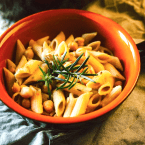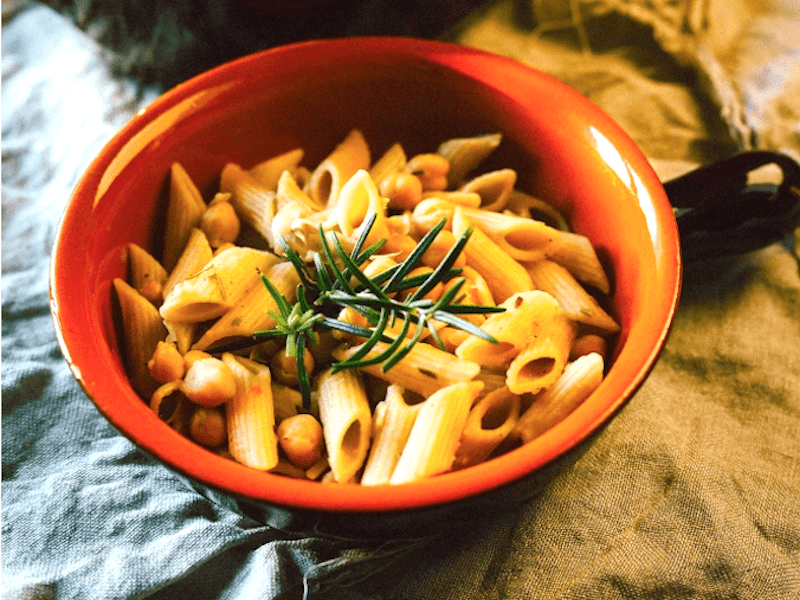My granny used to cook pasta with chickpeas for me since I remember. She also was accustomed to eat it as an all-in-one dish during tough times (during wars and before the economical boom in our Country), because of the completeness of the nutrients and the amount of protein in it.
But then, growing up and getting worse eating habits, I started to get belly-issues with legumes (as probably many of you) and stopped eating it.
Now I got back to be interested in plant proteins and tried to see if what everyone is saying about belly-issues is true: you’re supposed to get accustomed to legumes and your belly should be more and more tolerant towards them.
So, what’s best than pasta with chickpeas to train my intestines?
Print
Rustic Pasta with Chickpeas
- Yield: 4 servings 1x
Description
Rustic Pasta with Chickpeas is a traditional dish, often considered to be food for the poor, but is packed with both flavor and nutrition.
Ingredients
- 180 – 200 gr (6 or 7 ounces whole pasta (I like short pasta, like mezze penne))
- 500 gr 1 pound chickpeas (I used canned chickpeas, but you can use what best inspire yourself)
- 3 tablespoons of extra virgin olive oil
- 1 each of finely chopped carrots (onions and celery (the classic italian soffritto))
- 2 tablespoons of bio granular vegetal broth
- 1,5 liter of water
- dry rosemary
- pepper
Instructions
- Pour the water in a pot and let it boil; add the bio vegetal broth.
- Meanwhile, in another pot, put the vegetables and the oil and make them sauté until you see they’re browned, then pour a spoonful of broth and let it cook for 3 – 4 minutes.
- Wash the chickpeas and pour them in, adding also the pepper and the rosemary. Let them cook for another 5 minutes, then pour the rest of the broth and let it go for 30 minutes, with a cover.
- Now you can add pasta and let it cook for 10 minutes or for the suggested time on the package.
- If you’re able to not to finish it as soon as it cools, you can freeze it and use it as last minute dinner when you’re late from work!
- Category: Primi














I love the simplicity of grandmas food! I also noticed that stomach issues are mainly problems of occasional ‘legume eaters – i believe it is bacause they are unaccustomed to some cooking rituals. In general it is soaking that makes unfriendly subtances pass from grains into water. Cooking legumes until absolute softness is another thing – it helps to desactivates antinutrients. Canned beans or peas in this case seem to be a safer choice – but personally possible interactions between metal can and food make me avoiding them. Luckilly all tipes of lentils don’t need soaking and cook quite fast.
By the way I’ve done quick check on nuntritional value per serving: Energy 452kcal | Protein 16g | Fat 14.5 g | Carbohydrate 69g | Fiber 13.5g. This definietely must fill you up for long!